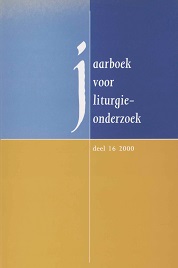De allegorische uitleg van de liturgie en zijn legitimatie: Amalarius van Metz, Hugo van St.-Victor en Durandus van Mende
Abstract
The allegorical explanation of liturgy and its legitimisation: Amalar of Metz, Hugh of Saint-Victor and Durand of Mende. The central scope of this article is to point out the central importance of the writings of Hugh of Saint-Victor for understanding the allegorical explanation of liturgy. This phenomenon was laid down into a literary tradition of expositiones liturgicae, beginning in the ninth century with Amalar of Metz, and which was given its zenith in the compilatory works of Durand of Mende at the end of the thirteenth century. The so-called ‘rememorative allegorese’ of Amalar merely points out the motive for allegorical explanation of liturgy, whereas Hugh of Saint-Victor is to be accounted for an overall and integral concept of this mode of interpretation. Firmly embedded in the hermeneutics of the Bible, Hugh proposes an explanation based on God’s language of signs in Creation, the Bible and in liturgy. His use of the notion of sacraments can only be understood when linked to the works of Dionysius the Areopagite.


